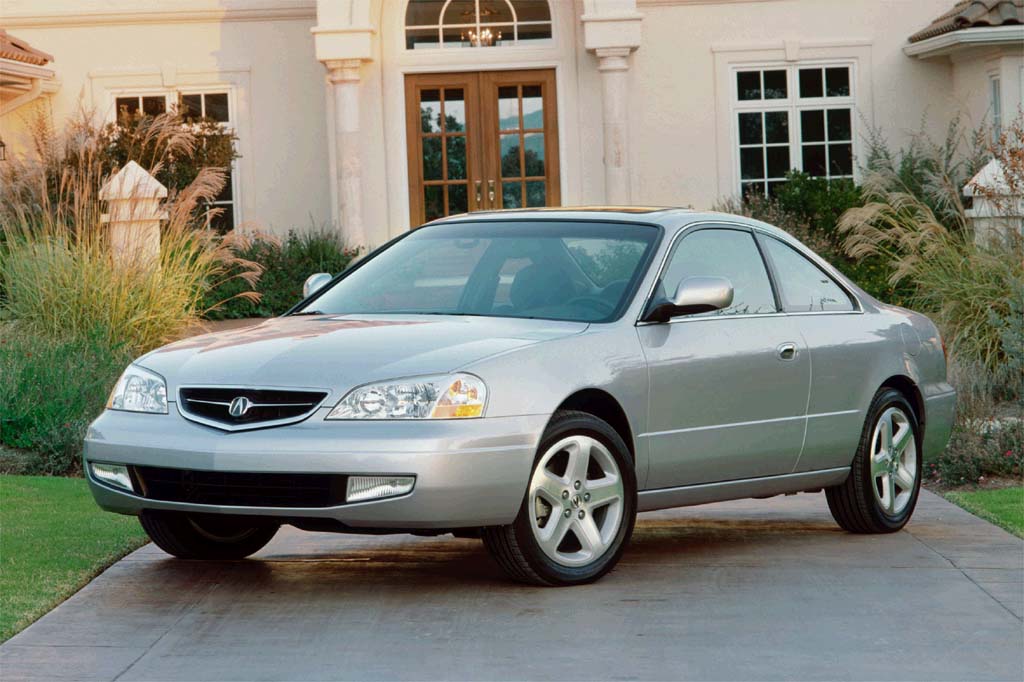| Premium midsize car; Built in USA |
|
|
| Good condition price range: $4,000 – $7,000* |

2001 Acura CL

2001 Acura CL

2003 Acura CL interior

2002 Acura CL Type-S

2003 Acura CL Type-S
| Pros: |
|
| Cons: |
|
Acura’s prior CL seemed like little more than a restyled two-door Honda Accord. This one has a sportier personality that should satisfy demanding drivers. While lacking the agility of a BMW 3-Series, it appeals for brisk acceleration and adept ride/handling balance. Well-equipped when new, CLs make few concessions to pricier European coupes in performance, comfort, or quality.
Overview
Honda’s luxury division introduced the second generation of its front-drive near-luxury coupe in spring 2000, as an early 2001 model. Slightly larger and heavier than its 1977-99 predecessor, the new CL retained its general appearance and four-seat layout. The CL coupe was based on the platform of Acura’s TL sedan and parent Honda’s Accord. In Acura parlance, CL stands for “contemporary luxury.”
In base form, the 3.2 CL used the TL sedan’s 225-horsepower, 3.2-liter V6 engine. A 260-horsepower version went into the new performance-oriented CL Type-S. Both used a five-speed automatic transmission with a manual-shift gate.
Half an inch longer in wheelbase than the previous CL, the new coupe measured 2 inches longer overall and offered an additional 2 inches of rear leg room. Weight increased by about 200 pounds. Front side airbags and antilock all-disc brakes were standard. A sensor system could disable the front passenger airbags if it detected a child or out-of-position occupant.
Both versions held alloy wheels, but the Type-S rode 17-inch tires rather than the usual 16-inchers. The Type-S coupe featured handling-oriented suspension tuning and an antiskid system. Traction control was standard.
Like the TL sedan, the 3.2 CL coupe came with an abundance of standard features, including heated power front seats, leather upholstery, Xenon headlights, and a power sunroof. Automatic climate control, heated mirrors, and a six-disc in-dash CD changer also were standard. A navigation system with in-dash touch screen was the sole factory option. Rivals include the BMW 3-Series, Mercedes-Benz CLK, Toyota Solara, and Volvo C70.
Yearly Updates
| 2002 CL Because the 2003 CL coupe was scheduled to arrive as an early 2003 model, changes were few for 2002. |
| 2003 CL A six-speed manual gearbox became available for the CL Type-S coupe, coupled with a limited-slip differential. When equipped with automatic, the Type-S included an antiskid system. This season’s styling updates included newly-designed wheels, revised headlights and taillights, a body-colored grille surround and outside door handles, and interior trim revisions. GM’s OnStar emergency/communications system became available, as part of the optional navigation system. |
